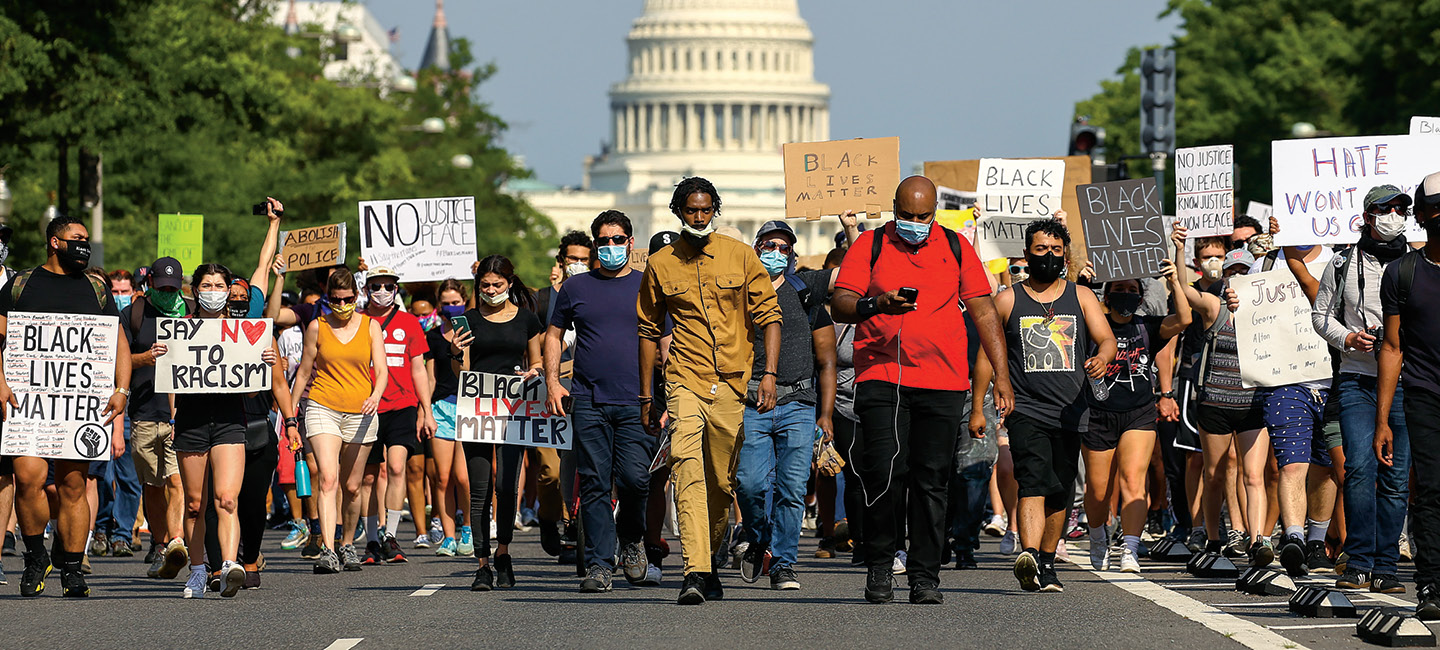This year, Upfront is publishing a series of articles highlighting racism in the U.S. and efforts to combat it.
When 15-year-old Kennedy Green learned about the death of George Floyd this past May, she was outraged. Floyd, a Black man, was killed by a white police officer in Minneapolis, Minnesota.
The officer pressed his knee into Floyd’s neck for more than 8 minutes, slowly suffocating him. Video of the killing sent shockwaves across the country—and prompted Kennedy, who is Black, to take action.
She and five other teenage girls organized a Black Lives Matter protest in Nashville, Tennessee, to call for an end to police violence and racism.
The rally, which attracted 10,000 people, was one of the largest against white supremacy ever held in the city, and people of all races joined in it.
“I’m happy a lot of people are realizing that there’s a problem with the system,” says Kennedy. “I don’t want to see kids after us have to protest.”
Kennedy is among the millions of people who’ve marched and rallied in the wake of Floyd’s death. The protests, which have taken place all across America and spread around the globe, began as demonstrations against police violence toward Black people. But before long, they touched nearly all aspects of American life—prompting changes to everything from flags and monuments to food brands and sports.
“It looks, for all the world, like these protests are achieving what very few do: setting in motion a period of significant, sustained, and widespread social, political change,” says Douglas McAdam, a professor at Stanford University who studies social movements.
When 15-year-old Kennedy Green learned about the death of George Floyd this past May, she was outraged. Floyd, a Black man, was killed by a white police officer in Minneapolis, Minnesota.
The officer pressed his knee into Floyd’s neck for more than eight minutes, slowly suffocating him. Video of the killing sent shockwaves across the country. It drove Kennedy, who is Black, to take action.
She and five other teenage girls organized a Black Lives Matter protest in Nashville, Tennessee. They wanted to use the demonstration to call for an end to police violence and racism.
The rally attracted 10,000 people. It was one of the largest against white supremacy ever held in the city, and people of all races joined it.
“I’m happy a lot of people are realizing that there’s a problem with the system,” says Kennedy. “I don’t want to see kids after us have to protest.”
Kennedy is among the millions of people who’ve marched and rallied in the wake of Floyd’s death. The protests have taken place all across America and spread around the globe. They began as demonstrations against police violence toward Black people. But before long, they touched nearly all aspects of American life. In fact, the wave of action has sparked changes to everything from flags and monuments to food brands and sports.
“It looks, for all the world, like these protests are achieving what very few do: setting in motion a period of significant, sustained, and widespread social, political change,” says Douglas McAdam, a professor at Stanford University who studies social movements.

